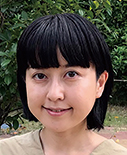Disclaimer: machine translated by DeepL which may contain errors.
Seimei no rekishi" in the bathtub
Akira Takigawa, Associate Professor, Department of Earth and Planetary Science

What existed long before the birth of dinosaurs and before the birth of the earth? Soaking in the bathtub, my 3-year-old 8-month-old son asked. 4.6 billion years ago, there was no earth, and gas and dust were circling around the baby sun. I say this and turn the hot water round and round. This is a signal to play. My son's hands and mine make the earth in a giant collision, recreating trilobites and cephalopods. Little by little, the creatures evolve, and finally our favorite dinosaurs appear. Then a meteorite flies in from the asteroid belt and falls on the Yucatan Peninsula in Mexico. When you hit the hot water with a tap, water droplets fly up. Mammals jump out of the hot water one after another. Finally, a ningen! and then they end the game by dabbing their bellybuttons. In our house, the picture book "The History of Seimei no Rekishi" (written and illustrated by Virginia Lee Burton) is very popular right now.
I first learned about "The History of Life and Death" when I was a first-year master's student. A classmate of mine told me that it was a picture book that got Dr. Abe interested in earth and planetary science. A classmate of mine told me this. Dr. Yutaka Abe is a pioneering researcher in Earth and planetary system science. He continued his research and education while battling amyotrophic lateral sclerosis (ALS). Dr. Abe's gentle words quickly laid bare the crux of his research. Listening to him, my interest in the Earth and its planets was aroused. Then and now, I have the greatest respect for Mr. Abe as a researcher.
However, I have no memory of ever having a casual chat with him. For the five years that I was a member of the laboratory next to his, we saw each other every week at seminar, but I only wanted to show him my good side and did not know what to say to him. I opened the "History of Seimei no rekishi" with high expectations at the time. The galaxy and solar system formation were dynamic and certainly interesting. But after the prologue, I lost interest. I thought that the evolution of life, which is attached to the earth and is born and dies out in a short period of time, is a trivial event. That's what I thought.
All my life I had been listening to Abe's words carefully. When he left the University of Tokyo after receiving his degree, I gave him a vague, hesitant greeting. He wished me good luck. These were the last words I exchanged with Mr. Abe, who passed away in 2018.
Four years after leaving Tokyo, I was pregnant with a child. In my own body, limbs formed on what looked like bean grains, and finally they kicked against me from the inside. All I wanted to eat was vinegared rice and hot tofu. What an animal-like change! It was as if I was being forcefully confirmed that I was a living being. One summer day, I was released from fear and pain. Instead, a wet, warm, 2.3-kilogram ningen was placed on my chest. I surrendered. My wonder at life, my awe, my curiosity. Was it this intense? Once you know, it's hard to remember a time when you didn't.
 The History of Seimei no Rekishi (written and illustrated by Virginia Lee Burton, translated by Momoko Ishii). |
I have returned to the Department of Earth and Planetary Science as a faculty member. And I am researching what the solar system is among the stars of our galaxy and what the materials were that created our solar system. In the bath, he enthusiastically demonstrates how life appeared and evolved on the earth. The picture book "Seimei no rekishi" begins with the words, "Unimaginably long ago, the sun was born. Then he concludes, "Now, the rest of the story is about you. I would like to add a new page to the prologue of "The History of Seimei no Rekishi. Studying the world before the sun was born. I want to talk to Mr. Abe, clutching my curiosity about the earth and life that I have finally found.
Faculty of Science News welcomes essay submissions. We welcome all submissions, regardless of whether they are self-recommended or not. We especially welcome submissions from Faculty and graduate students. However, the Communications & Public Relations Committee will decide whether or not to publish your essay.
Please send your contributions to rigaku-news@adm.s.u-tokyo.ac.jp.
Published in the May 2021 issue of Faculty of Science News


